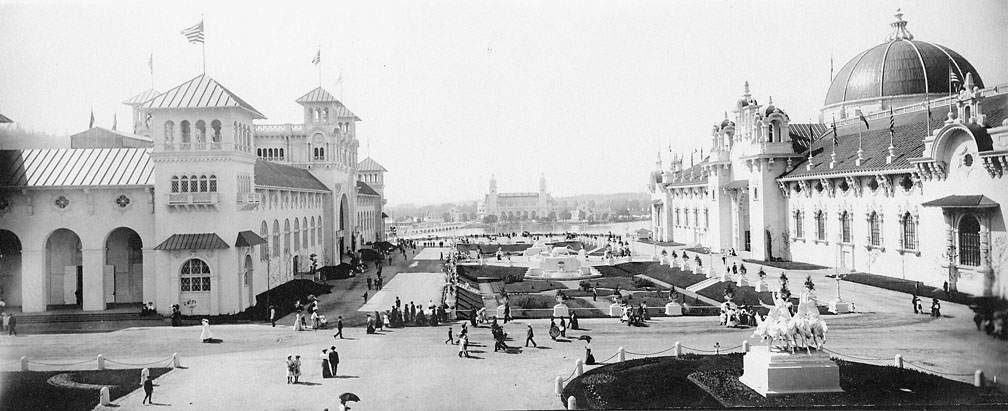- Catalog No. —
- OrHi 64402
- Date —
- 1905
- Era —
- 1881-1920 (Industrialization and Progressive Reform)
- Themes —
- Arts, Trade, Business, Industry, and the Economy
- Credits —
- Oregon Historical Society
- Regions —
- Portland Metropolitan
- Author —
- Unknown
Central Vista, Lewis & Clark Centennial Expo
The 1905 Lewis and Clark Exposition was the West Coast’s first worlds fair. This central vista shows the Foreign Exhibits Building on the left, and the Agricultural Palace on the right. At the far end of the wide walkways between the buildings, one could descend the Grand Stairway and see Guild’s Lake. From the Grand Stairway, one could cross the Bridge of Nations to the U.S. Government Building in the middle of the lake. It was truly an impressive sight.
City businessmen first considered the idea of a fair in 1895, believing that it might be a way to mark the new century and chase off the lingering economic downturn of 1893. It was not until 1900 that the idea truly began to take root. The organizers eventually decided that the fair’s theme should commemorate the Lewis and Clark Expedition.
In 1902, the Guild’s Lake site was chosen over competition from sites such as City Park, now Washington Park, and Hawthorne Park in Southeast Portland. Guild’s Lake appealed to planners especially after it was determined that the Lake did not dry up in the summer and could provide a pleasing central attraction for visitors. In addition the lake could easily be dammed to increase the two-and-a-half foot depth enough to accommodate small boats. John Olmsted, the same architect who created the first citywide park plan, also designed the fair's layout.
Despite widespread enthusiasm, the fair had its detractors, including union leaders who believed that they had been deliberately misled. They understood that construction crews would be unionized; instead the open shop system was followed. Others decried the blending of public and private capital as a conflict of interest that would only line a few businessmen’s pockets at public expense.
Written by Trudy Flores, Sarah Griffith, © Oregon Historical Society, 2002.
